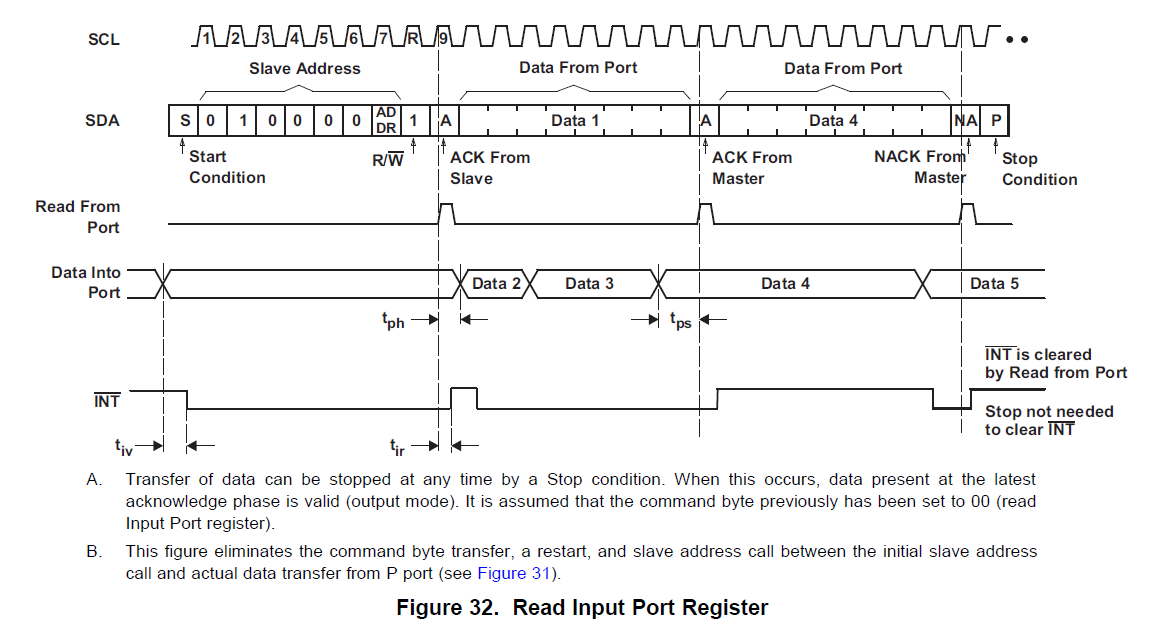Hi, team,
Could you please let me know about INT feature?
1. Is there two type of use case for INT? One is a interrupt signal when data on the port is changed (input mode?) And another is signal for the indicator which is Ack / NACK on I2C ( Read mode?) Is my understanding correct?
2. If my understanding of 1 is correct, how can user select each mode?
3. If my understanding of 1 is correct, could you please let me know the INT timing chart for input mode.
4. Data sheet shows " when data on the port is changed to original setting or ..." as below. What is original setting?
Regards,
Nagata.




